
Rarest Eye Color: Unveiling the World's Most Unique Shades
Posted by Team Debby on 22nd Jan 2024
Rarest Eye Color: Unveiling the World's Most Unique Shades
Eye color is one of the most captivating features in human genetics. It results from the complex interplay of genetic factors influencing the pigmentation of the iris.
Rarest amongst these is green, found in merely 2% of the world's population. However, there's an even more uncommon hue that some argue holds the title for the rarest color: amber. Amber is often confused with the more common brown.

We understand that the variation in eye color among individuals is largely due to the amount and distribution of melanin within the iris. The genetics behind eye color are not simple, as it is not determined by a single gene but rather by multiple genes working together.
While brown is the most prevalent eye color worldwide, due to its dominant genetic traits, the rarity of colors like green and amber can be attributed to the recessive genes that must come together to produce these unique shades.
Our iris is not merely a static trait but a window into the complex genetic story that each of us carries. Exploring the rarest eye colors offers an intriguing glimpse into the diversity and mystery of human genetics.
Whether through a twist of genetic inheritance or through lesser-understood factors that influence these uncommon shades, the rarity of certain eye colors reminds us that there is much we have yet to uncover about the way our genes shape us.
Genetics of Eye Color

We will explore the fascinating science behind eye color, focusing on its genetic underpinnings and the interplay of multiple genes. Through this examination, we will understand why certain eye colors are rarer than others.
Genetic Determinants
Human eye color is predominantly determined by the variations and interactions of several genes. The OCA2 and HERC2 genes, located on chromosome 15, play a crucial role.
Specifically, the HERC2 gene regulates the OCA2 gene’s expression. The OCA2 gene's role is fundamental as it influences the amount of brown pigment, eumelanin, produced.
Variants of these genes can either increase or limit eumelanin production, thus determining a range of eye colors from brown to blue.
- OCA2 Gene: Linked to pigment production.
- HERC2 Gene: Influences OCA2 expression.
Inherited Traits and Eye Color
Eye color is an inherited trait that follows a somewhat complex inheritance pattern.
Traditionally, it was thought that eye color was a simple Mendelian trait, where brown eyes are dominant over blue. However, we now acknowledge that it's more intricate, involving multiple genes that contribute to the final eye color.
For instance, a child might inherit a mixture of recessive blue eye alleles and still have green or brown eyes due to other genetic factors.
- Inheritance Pattern: Not purely Mendelian.
- Resulting Eye Color: Combination of genetic interactions.
The Role of Multiple Genes
While the OCA2 and HERC2 genes have significant input, numerous other genes contribute to the complexity of eye color.
Multiple genes account for the vast spectrum of colors, including the rarest hues.
These include genes that affect the levels of another type of pigment called pheomelanin, which adds yellow and red tones to the iris.
Consequently, a unique interplay between eumelanin and pheomelanin, controlled by our genetic makeup, determines the ultimate shade of our eyes.
- Eumelanin: Brown/black pigment.
- Pheomelanin: Yellow/red pigment.
- Gene Interaction: Produces varying eye colors.
Types of Rare Eye Colors
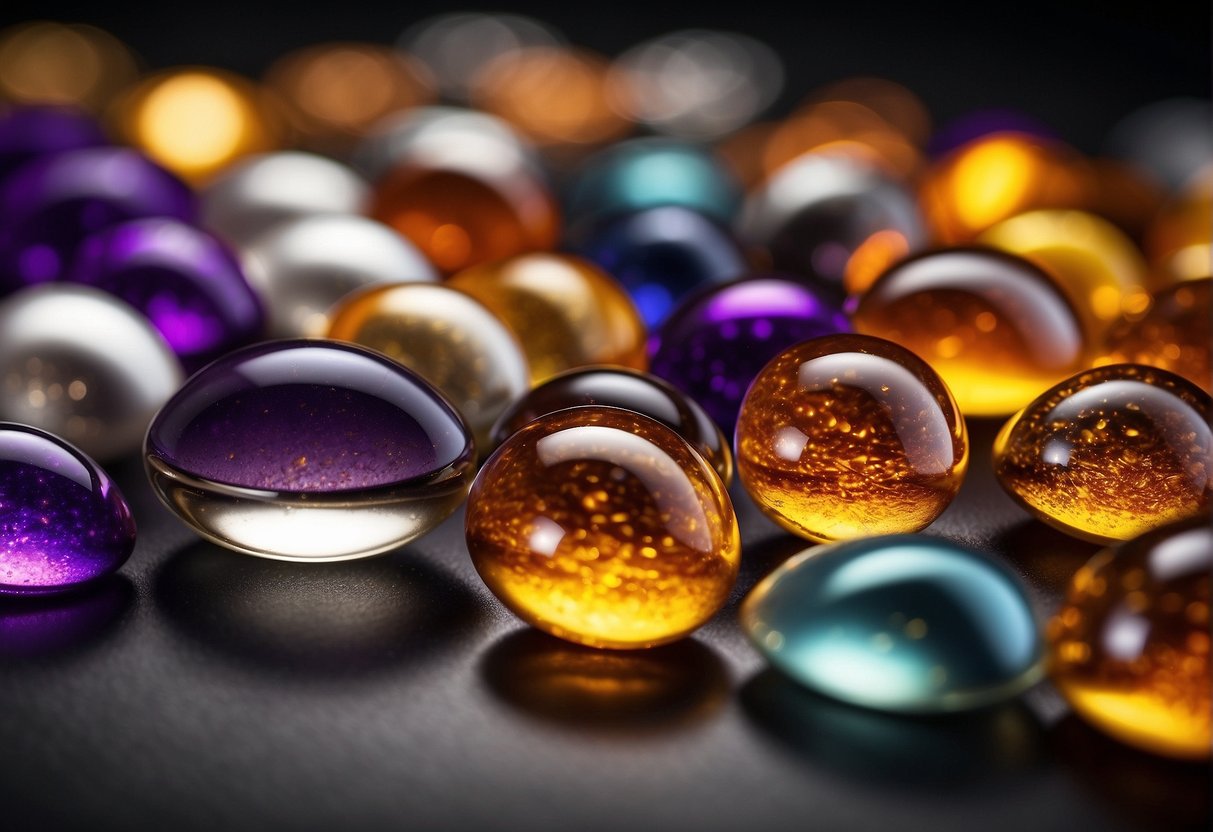
We will explore the unique and less common eye colors that captivate attention due to their rarity. These colors range from the mysterious violet to the lustrous amber.
Violet Eyes
Violet eyes are one of the rarest eye colors in the world. This remarkable color occurs due to a high level of melanin and the way light scatters in the stroma, a phenomenon similar to what gives the sky its blue color.
Elizabeth Taylor is a famous personality often cited for her violet eyes, which may have also been a result of the genetic condition called Alexandria's Genesis, although that condition is not scientifically recognized.
Green Eyes
Green eyes are another uncommon eye color, accounting for approximately 2% of the world population.
The green pigment is due to a moderate amount of melanin in the iris coupled with a blue hue created by the Rayleigh scattering of light.
Green eyes can vary from a bright, emerald shade to a more subtle, hazel-green, influenced by lighting conditions or the environment.
Amber Eyes
Amber eyes showcase a solid golden or coppery color that is quite rare. Unlike blue or green eyes, the amber iris displays a yellowish or golden tint, which is the result of the pigment lipochrome.
These eyes are less common than blue or green, making them one of the rarest eye colors found in humans.
The Science of Pigmentation

In our exploration of eye color, we'll focus on pigmentation and the role it plays in the hue of the iris.
Melanin and Pigmentation
Melanin, the primary pigment found in our eyes, is responsible for the absorption of light and protection against UV radiation.
In the iris, the amount and type of melanin determine eye color variation.
Eumelanin and pheomelanin are the two types of melanin present in the eye. The former gives a brown or black color, while the latter contributes to green or hazel eyes.
Typically, a greater concentration of melanin leads to darker eye colors.
| Type of Melanin | Role in Eye Color |
|---|---|
| Eumelanin | Darkens the iris to brown or black |
| Pheomelanin | Contributes to green or hazel eye colors |
Other Pigments in the Eye
Aside from melanin, other pigments like lipochrome play a secondary role.
Lipochrome is a yellowish pigment that, when combined with melanin, can result in various shades of eye color, especially greens and hazels.
The density of these pigments, alongside the structure of the iris, affects how light is scattered and absorbed, influencing the perceived eye color.
- Less melanin: blue or grey eyes due to Tyndall scattering
- Moderate melanin with lipochrome: green to hazel eyes
- High melanin: brown to nearly black eyes
Eye Color Variations

Eye color variations can be fascinating and indicate the complexity of genetic inheritance along with other factors. We'll explore conditions that result in unique eye appearances, such as heterochromia, anisocoria, and changes in eye color over time.
Heterochromia
Heterochromia refers to a condition where an individual has two different colors in one eye, or two different colored eyes altogether. It's a rare trait that can be inherited, or it may develop due to an injury or medical condition.
For instance, Horner Syndrome is sometimes associated with heterochromia.
Anisocoria
Anisocoria is characterized by pupils of unequal sizes. It's not directly an eye color variation, but it can affect the perception of eye color.
Causes of anisocoria range from harmless genetic traits to more serious medical conditions requiring attention.
Eye Color Changes
Throughout our lives, our eye color can change.
It's most noticeable in infants, whose eyes may darken from a light color at birth. For adults, significant color change could indicate an underlying health issue, although subtle variations are typically benign.
Medical Conditions Related to Eye Color
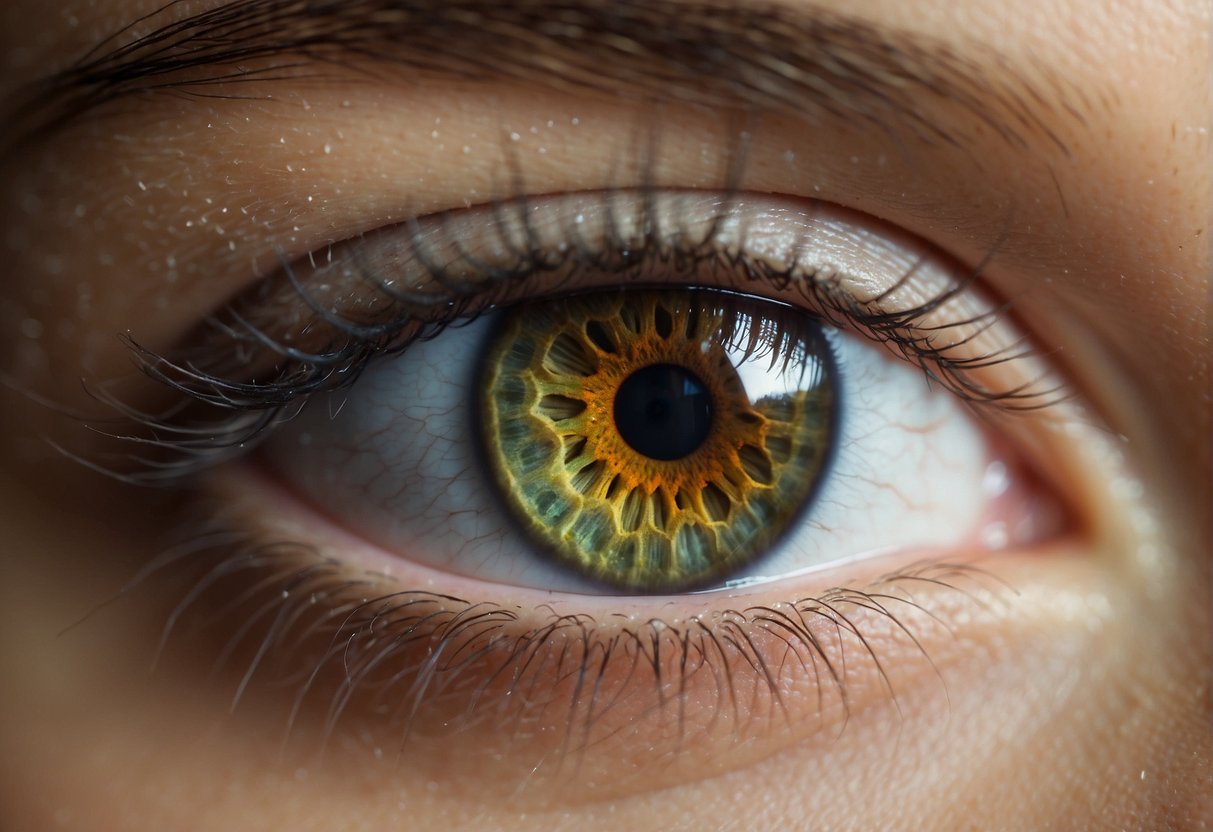
In discussing eye colors, especially rare ones, we must address specific medical conditions that can influence or be associated with eye pigmentation. Two notable conditions are albinism and eye diseases such as glaucoma and cataracts, which not only affect eye color but also have significant implications for vision.
Albinism
Albinism is a genetic condition characterized by a significant reduction or complete lack of melanin pigment in the skin, hair, and eyes.
Individuals with albinism often have very light blue, gray, or pinkish eye colors due to the reduced melanin.
Vision problems are common, as melanin is essential for the proper development of the retina and optic pathways. Hence, people with albinism might experience a range of visual impairments.
Glaucoma and Cataracts
- Glaucoma: This condition relates to increased pressure within the eye that can lead to optic nerve damage and, subsequently, vision loss. While glaucoma does not change eye color itself, it is essential to note that the condition can lead to severe visual impairment if left untreated. Regular eye check-ups can help in early detection and management.
- Cataracts: A cataract is characterized by the clouding of the eye's natural lens, which is usually transparent. While predominantly associated with aging, cataracts can sometimes give the pupil a greyish or milky appearance as opposed to the common understanding of eye 'color.' They can severely affect vision, and surgery is often required to restore eyesight.
Cultural and Geographic Influence on Eye Color
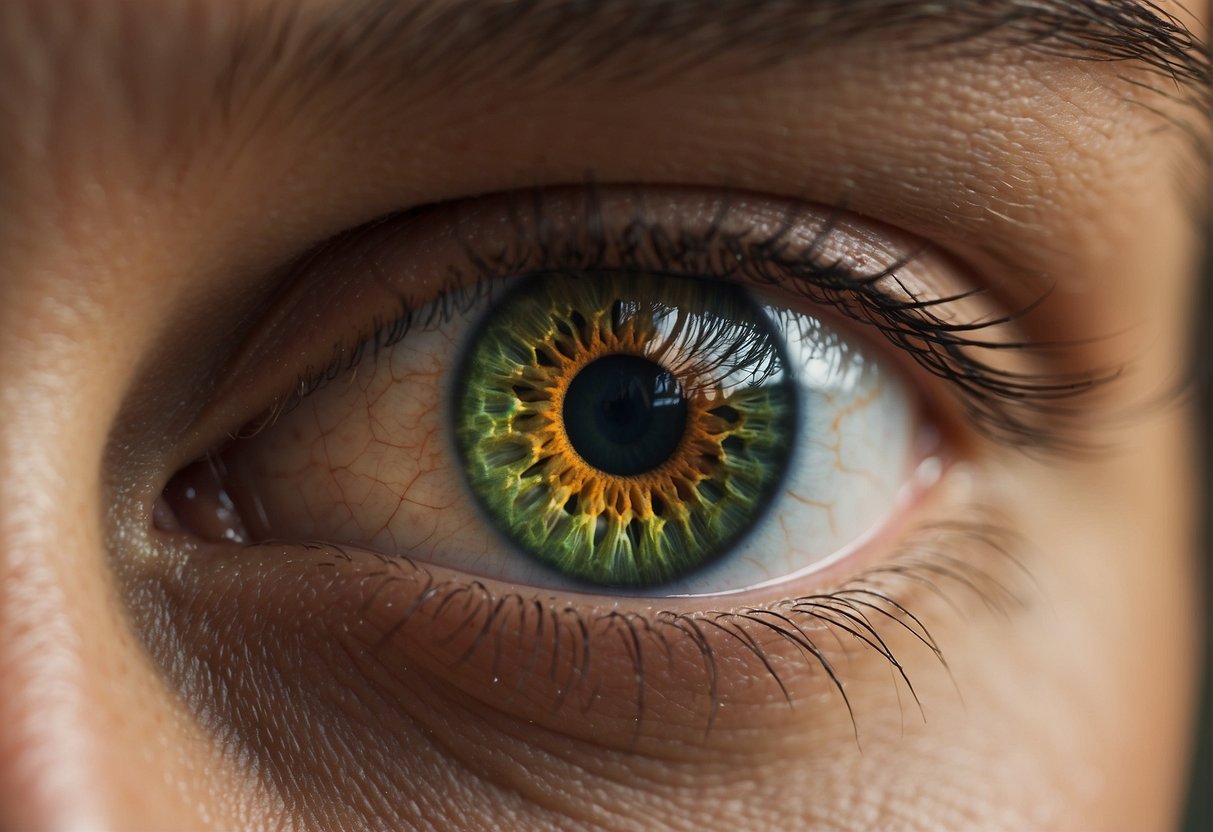
Our exploration of eye color variations reveals a fascinating tapestry of hues influenced largely by geographic distribution. We see a distinct correlation between certain regions and the prevalence of various eye colors.
Eye Color Distribution by Geography
When we examine eye color percentages by geography, significant patterns emerge.
For instance, brown eyes are predominantly found worldwide. Notable majorities in Africa, Asia, and Latin America have over 70-90% of the population with brown eyes. This showcases how geography can often predict eye color trends.
Moving to the lighter spectrum, blue eyes have a particularly strong presence in Northern Europe.
Here, more than 80% of the population in countries like Sweden and Finland may exhibit this eye color.
The United States also shows a diverse range of eye colors. According to the Harris Poll, blue eyes are present in roughly 1 in 5 Americans. This demonstrates how eye color diversity can be found within a single country.
Green eyes, often cited as one of the rarest colors, are most prevalent in Northern and Central Europe. However, they still account for a mere 2% of the world's population. This rarity increases their allure and the curiosity surrounding them.
The Aesthetics of Eye Color

When discussing the aesthetics of eye color, we consider cultural perceptions and the use of colored contact lenses to change or enhance eye color.
These elements interact with notions of beauty and personal expression across different societies.
Cultural Perceptions of Eye Color
Eye color has been a subject of fascination and often attributed with various meanings in different cultures.
For instance, blue eyes are relatively rare, comprising only about 8-10% of the global population, and they have historically been associated with youth and innocence. Gray eyes are even less common, sometimes viewed as mysterious. Meanwhile, rare eye color types, such as purple eyes, are often surrounded by myths and may be perceived as exotic or alluring.
Cultural Assignments of Eye Color Meanings:
| Eye Color | Perceived Meaning |
|---|---|
| Blue Eyes | Youth, Innocence |
| Gray Eyes | Mystery, Intensity |
| Purple Eyes | Uniqueness, Exoticism |
Colored Contact Lenses
Colored contact lenses have become a tool for altering eye color for aesthetic purposes.
These lenses are available in a wide range of colors, allowing individuals to experiment with eye colors that are less common, such as blue or purple. Contacts are also used to mimic rare eye colors, making them more accessible to individuals who wish to alter their appearance.
The increasing quality and variety of colored contacts mean that one can easily change their eye color temporarily while maintaining a natural look.
Popular Choices for Colored Contact Lenses:
- For a Subtle Change: Lighter shades of blue or gray
- To Stand Out: Vibrant tones such as violet or bold blue
- To Enhance Natural Color: Tints that intensify one's own eye color
Colored contact lenses are regulated in many countries to ensure they meet safety standards. It's crucial that users follow the proper guidelines to avoid any risk to their eye health.
Professional Insight
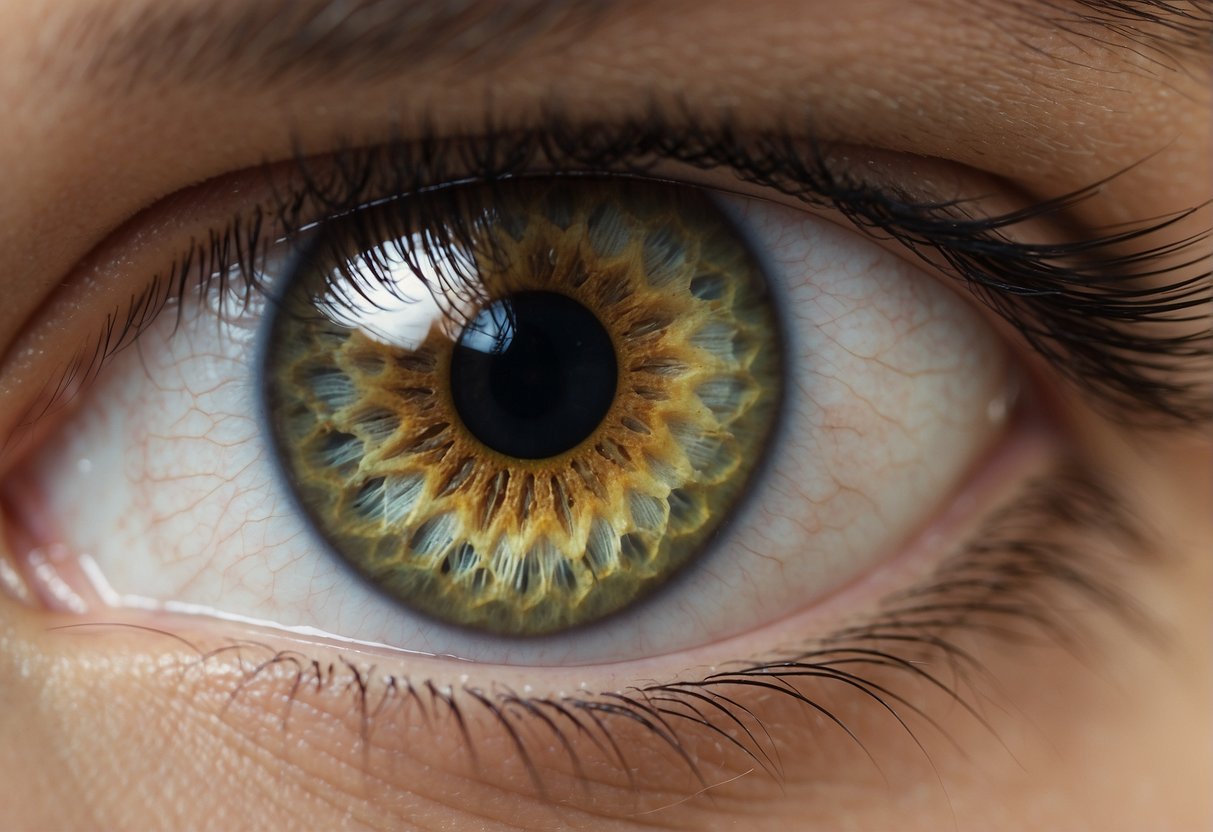
In our discussions with experts from the American Academy of Ophthalmology, we have gathered comprehensive insights into the determinants of eye color.
It's well understood that iris color variation is largely genetic, but we as professionals are ever-curious about the less common hues seen in human eyes.
The rarity of certain eye colors can be attributed to the specific genetic mutations affecting melanin distribution within the iris. For example, amber eyes are quite rare and possess a solid golden or copper hue, not to be confused with the more commonly observed brown.
Factors Influencing Iris Color:
- Genetics: The primary determinant of eye color.
- Melanin Concentration: Higher levels result in darker eye colors.
- Medication: Some types can alter eye color, affecting the pigment or pupil size.
Occasionally, eye colors can change due to drug interactions. For instance, certain glaucoma medications can lead to increased melanin in the iris, darkening light eyes over time.
It is important to note that while rare eye colors might be fascinating, they do not typically have a direct impact on vision.
However, people with lighter eye colors, such as blue or green, may be more sensitive to light due to the reduced amount of melanin.
Lastly, the pupil, while not directly related to iris color, plays a crucial role in eye health and function. It expands and contracts in response to light, enabling us to see in various lighting conditions.
Frequently Asked Questions
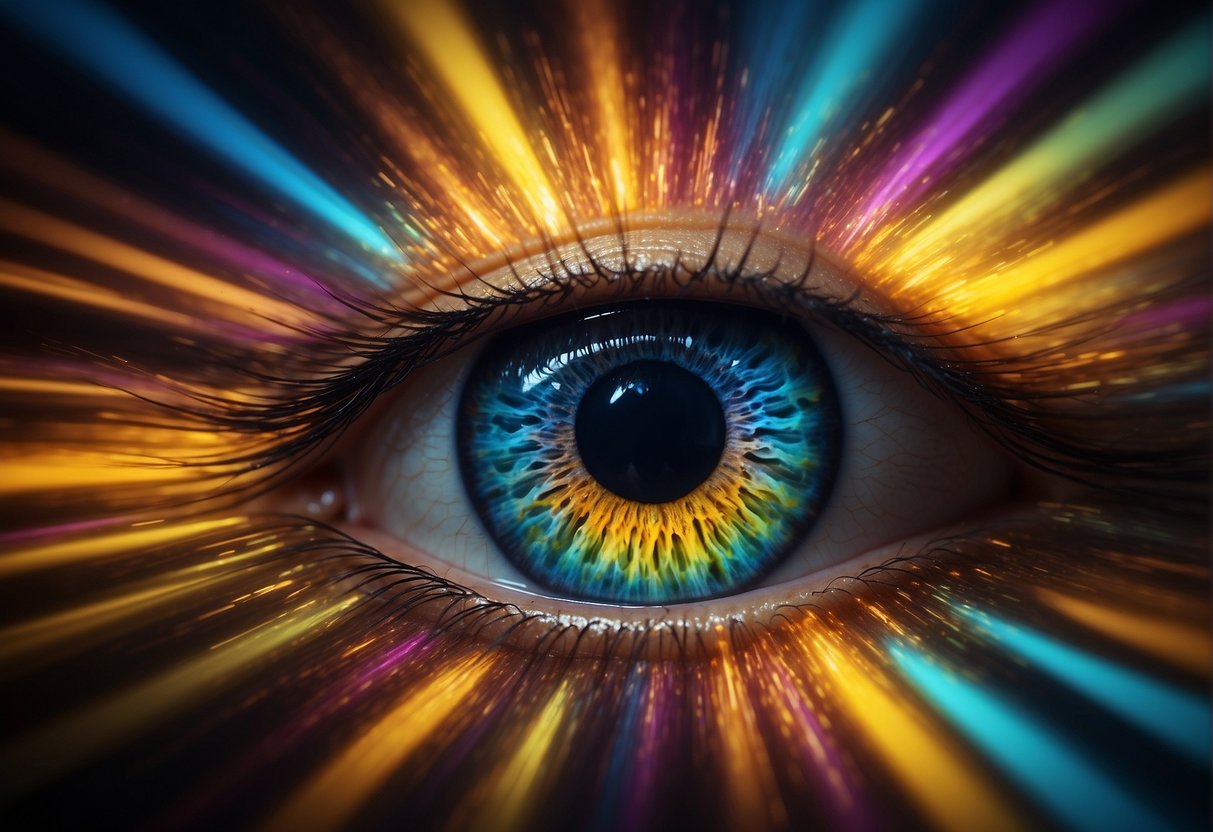
Eye color rarity is influenced by genetics and population distribution. Here we address some of the most inquisitive questions about the rarest eye colors from our shared human experience.
What determines the rarity of eye colors in humans?
The rarity of eye colors in humans is primarily determined by the genetics and the amount of melanin in the iris. Genetic mutations can also lead to rare eye colors.
Which eye color is considered the most uncommon?
Amber eyes are often considered to be one of the most uncommon eye colors. They have a golden or coppery hue due to a very specific pigmentation.
How prevalent are green eyes worldwide?
Green eyes are relatively rare and are estimated to be found in only 2% of the world's population. This rarity is due to the genetic requirements necessary for this eye color.
Can eyes actually be violet, and if so, how rare is it?
Yes, violet eyes can occur, though they are extremely rare. This eye color is usually a result of a lack of melanin and light reflecting off red blood vessels, as seen in some cases of albinism.
What factors contribute to the rarity of grey eyes?
Grey eyes are uncommon because they require a specific balance of melanin and the scattering of light in the stroma of the iris. They are more likely to occur in populations of Northern and Eastern European descent.
Among all the different eye colors, which ones are the least common?
The least common eye colors are amber, green, violet, and grey. True amber and violet are particularly rare. These colors are all much less common than brown. Brown is the most prevalent eye color globally.

